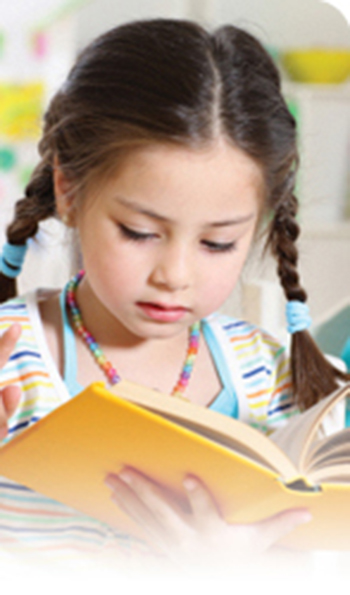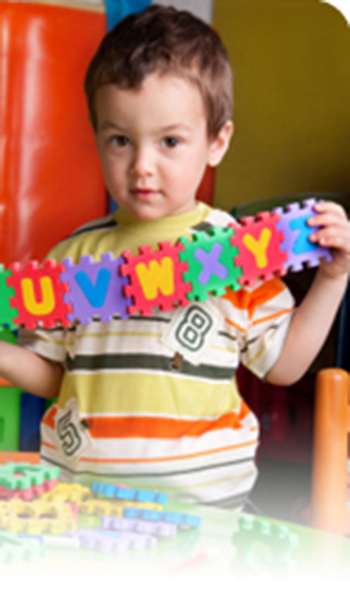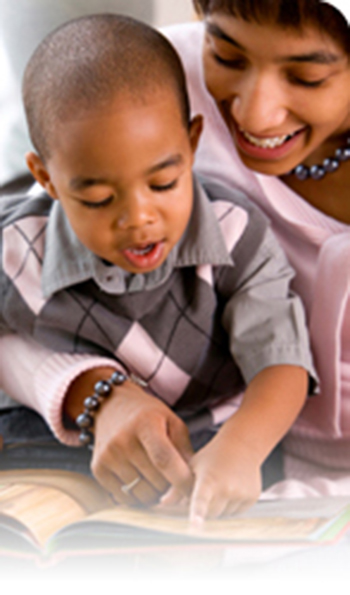Professional Therapy Providers
Speech and language therapy to exceed your needs.
Speech and language therapy to exceed your needs.
We are a group of clinically trained, highly qualified speech-language pathologist with a passion for helping our clients succeed. More About Us

At Professional Therapy Providers, Inc. we offer a wide variety of services to our clients who range in age from infancy to late adulthood. More on Specialties

The initial visit will be an evaluation session that will include paperwork, an interview, and appropriate standardized assessments. More on Getting Started

At Professional Therapy Providers, Inc., we are a group of clinically trained, highly qualified speech-language pathologist with a passion for helping our clients succeed. Our speech language pathologists are licensed by the Georgia State Board of Examiners for Speech Pathologist and Audiologist, ASHA certified, and hold masters degrees in their respected fields. Our Speech-Language Pathologists are highly skilled in many areas that include diagnosis and treatment, oral and motor apraxia, articulation, expressive and receptive language, disfluencies (stuttering), and auditory processing disorders for young children, teens, and adults.
Professional Therapy Providers Inc. is an Atlanta based company founded in 2003 to satisfy the needs of parents searching for quality speech and language therapy by caring and experienced therapists. Our qualified Speech-Language therapists strive to provide a positive and enriching environment where therapy is a fun thing to do and children ask for more.
Our mission is to provide speech and language therapy to exceed your needs. For small children we believe in functional therapy goals within a natural setting. Children are engaged in the tasks of therapy through play and attachment. For older children and adults we coordinate services with other educators and the curriculum as closely as possible to maximize opportunities for the child to generalize what he or she is learning in therapy.

Auditory Processing/ ReadingA child with an auditory processing disorder (APD) has difficulty processing or interpreting auditory information. This is a common disorder in children, even in those children with normal hearing abilities and normal intelligence.
A child with an auditory processing disorder may have difficulty understanding speech in the presence of background noise, such as a noisy classroom. The child may be unable to understand and follow spoken directions. The child may have difficulty discriminating and identifying individual speech sounds.
Some symptoms of APD are as follows:
Orton-Gillingham Instruction Coming Soon Orton-Gillingham is a phonetically based, structured approach effective in teaching reading, spelling, and writing of dyslexic students. Sound systems are taught employing all of the learning pathways--auditory, visual, activity based, and tactile. The Orton-Gillingham curriculum teaches, at appropriate developmental times, phonograms for decoding and encoding spelling rules and generalizations, writing, and syllable types.

Articulation DisordersA child with an articulation (speech sound) disorder has difficulty producing individual speech sounds or producing sounds correctly in words. There may be incorrect placement of the lips, teeth, tongue, or even soft palate during speech. This often affects the clarity of speech.
Speech sounds develop gradually over time, but most sounds should be correctly produced by the age of 3, and all sounds should be correctly produced by the age of 6. Below are common symptoms of an articulation disorder.

Language DisordersChildren are diagnosed with a language disorder when they have ongoing difficulty with the meaning of words or sentences (semantics), with word order or grammar (syntax), or with the social rules of language and conversation (pragmatics).
A language disorder can be characterized by any of the following:

Oral Motor DisordersAn Oral-Motor Disorder is an inability to use the oral mechanism for functional speech. Oral-motor disorders are diagnosed by the Speech and Language Pathologist directly observing the child, doing what is called an "Oral-Motor Exam". In this exam, the therapist asks the child to do a variety of tasks (such as pursing lips, blowing, elevating tongue, etc), looks inside the child's mouth, observes the child eating and listens to the child talk. The therapist will also listen for the child's ability to produce rapid oral movements. The Speech and Language Pathologist will determine how "intelligible" the child is (how much of what the child says can other people understand?), and may complete a formal speech test.
Some children with oral-motor disorders are considered to be orally hyper-sensitive or to have tactile defensiveness. These children tend to have very rigid lips, and appear to be tight around their mouths. They may hate having their teeth brushed, dislike many foods, and get upset when their mouths are touched. Other children are hypo-sensitive. These children may drool, because they have weak lip muscles. They may also stuff food in their mouths until they gag or choke; these kids don't have normal sensation in their mouths and it takes a lot of food before they realize their mouth is full. These type of children need to develop more normal sensitivity. A Speech and Language Pathologist can work with these children, using a variety of exercises designed to normalize sensitivity. These can include deep touch (for the hypo-sensitive child), chewing exercises, blowing a variety of whistles, working with straws, and more. If these children have multiple speech production errors, the Speech and Language Pathologist includes oral-motor exercises in every therapy session, and match the oral-motor exercise to the sound being targeted. For example, if the child has weak lip closure (tapping on the upper lip, drinking from a straw, blowing a whistle), then immediately working on words starting with [p],[b],or [m]. This way the exercise directly relates to the speech sound.
The most important thing to remember about speech production disorders is that therapy can, in most cases, make a huge difference. The earlier and more intensive the intervention, the more successful the therapy. Signs and Symptoms

Learning DisabilitiesLearning Disabilities affect the brain's ability to receive, process, analyze, and store information. This type of disability can make it difficult for a child to learn as quickly as someone who is unaffected by a learning disability.
There are many different types of learning disabilities. Most types fall into two categories: verbal and nonverbal. Children with verbal learning disabilities may have trouble with words, both spoken and written. Our Speech Therapists would be able to help treat and remediate verbal learning disabilities. Children with nonverbal learning disabilities may have difficulty processing what they see. Our Occupational Therapist can help your child improve nonverbal learning disabilities.
Learning disabilities are diagnosed by a physician at the M.D. or Ph.D. level and are treated by therapists. Speech therapy and Occupational therapy can aid children with learning disabilities and teach strategies that will help accomplish their goals and dreams.

AutismAutism is a complex developmental disability that typically appears during the first three years of life. The result of a neurological disorder that affects the functioning of the brain, autism impacts the normal development of the brain in the areas of social interaction and communication skills. Children and adults with autism typically have difficulties in verbal and non-verbal communication, social interactions, and leisure or play activities.
Autism is a spectrum disorder. The symptoms and characteristics of autism can present themselves in a wide variety of combinations, from mild to severe. Although autism is defined by a certain set of behaviors, children and adults can exhibit any combination of the behaviors in any degree of severity. Two children, both with the same diagnosis, can act very differently from one another and have varying skills.
People with autism process and respond to information in unique ways. In some cases, aggressive and/or self-injurious behavior may be present. Persons with autism may also exhibit some of the following traits.

ApraxiaChildhood Apraxia of Speech (CAS) is a motor speech disorder. Children with CAS have great difficulty planning and producing the precise, highly refined and specific series of movements of the speech mechanism. Most children who are diagnosed with CAS have receptive (or understanding) skills within normal limits. These children perform much better when asked to repeat simpler motor sounds, such as vowels or consonants in isolation. When asked to repeat a succession of vowels and consonants, many children with CAS have difficulty. All of the techniques used at Professional Therapy Providers include a motor hierarchy that builds on the individual child's skill level. This method allows the child to build confidence in their speech and therefore, they want to learn more.

DisfluencyStuttering affects the fluency of speech. It begins during childhood and, in some cases, lasts throughout life. The disorder is characterized by disruptions in the production of speech sounds, also called "disfluencies." Most people produce brief disfluencies from time to time. For instance, some words are repeated and others are preceded by "um" or "uh." Disfluencies are not necessarily a problem; however, they can impede communication when a person produces too many of them.
Stuttered speech often includes repetitions of words or parts of words, as well as prolongations of speech sounds. These disfluencies occur more often in persons who stutter than they do in the general population. Some people who stutter appear very tense or "out of breath" when talking. Speech may become completely stopped or blocked. Blocked is when the mouth is positioned to say a sound, sometimes for several seconds, with little or no sound forthcoming. After some effort, the person may complete the word. Interjections such as "um" or "like" can occur, as well, particularly when they contain repeated ("u- um- um") or prolonged ("uuuum") speech sounds or when they are used intentionally to delay the initiation of a word the speaker expects to "get stuck on." Some examples of stuttering include:
Professional Therapy Providers offers a wide variety of services for children birth to adulthood. All families can expect weekly communication with your therapist regarding their child’s progress in therapy, updates on goals, and home program activities.
To schedule an appointment with Professional Therapy Providers or for general information, please contact our main office at (404)815-9393 or e-mail us at: Info@ptp-atlanta.com. We're looking forward to working with you! Please feel free to contact your speech therapist with any questions or concerns at any time during your treatment. Open communication and family involvement is the key to success at Professional Therapy Providers!